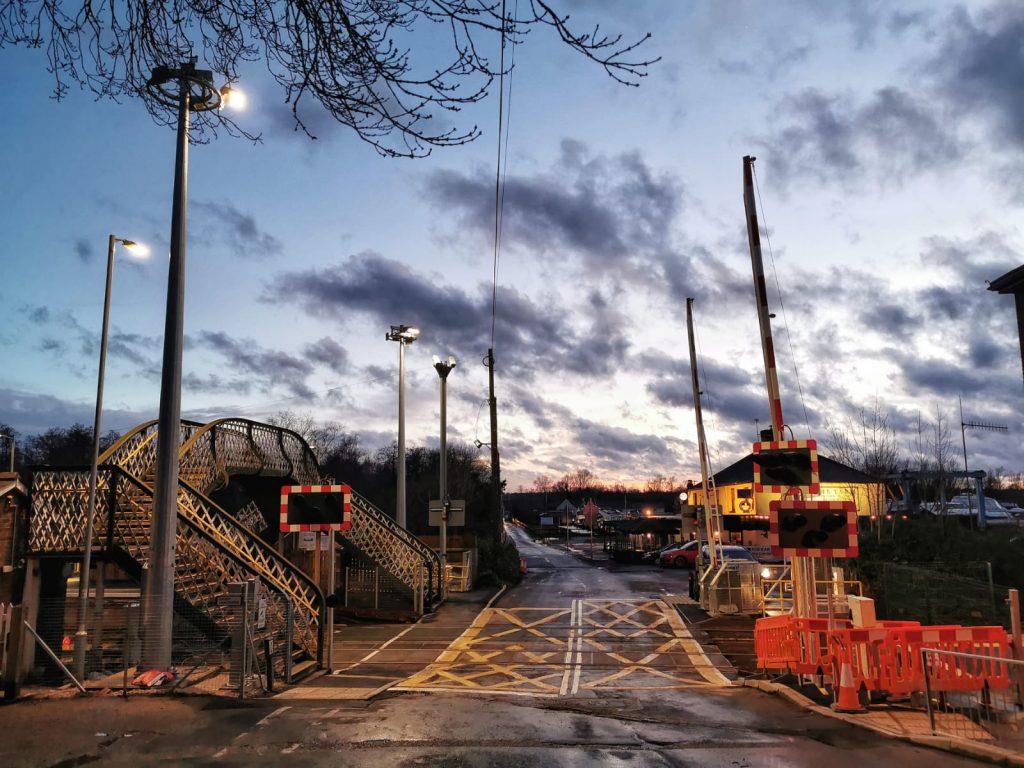Our teams have worked tirelessly in the recent stormy weather to keep the railway running safely for passengers, from repairing landslips to clearing lines of debris.
Not all our work has been emergency-related, however – we’ve continued to maintain and improve the railway to provide passengers with better and more reliable journeys.
In fact, we’ve just delivered a string of large upgrade projects despite the very heavy rain and winds of up to 80mph.
Please check National Rail Enquiries before you travel.
Here are seven things we’ve delivered for passengers despite the challenging weather:
1 – A modern, digital-enabled signalling system on the Wherry lines – the Norwich, Great Yarmouth and Lowestoft line – which we reopened on February 24. The line used Victorian semaphore signals – some of the oldest in the country – so we replaced the equipment and moved its control to our Colchester signalling centre.
Why do we transfer signalling control to our Rail Operating Centres? They can control much larger areas than traditional signalling, leading to much greater resilience because signallers can rapidly respond to disruption and route trains faster to minimise delays. Read more about our signalling upgrades.
Gallery: the existing Victorian signalling system in Lowestoft and one of our modern Rail Operating Centres
2 – Six level crossings upgrades on the Wherry lines, along with 11 user-worked crossings, which will improve safety. Read about our level crossings risk reduction programme.

3 – As part of the same project, we completed track renewals at Lowestoft, Hassingham, Acle and Oulton Broad North. Maintaining our 20,000 miles of track across Britain ensures safety and reliability of journeys for passengers. Find out more about this huge infrastructure.
4 – A more resilient railway in Greater London. We’ve responded to several landslips in South East England since Storm Ciara this month but the work at Bexleyheath was a project we planned in advance to make the ground by the railway stronger. More than 200 engineers worked around the clock at 17 sites in the area to protect the railway between Kidbrooke and Barnehurst, and reopened the line on February 24.
5 – Better stations and more reliable signalling. We took the opportunity during the Bexleyheath line closure to carry out a string of improvements for passengers. These included deep cleans of stations and repainting; track maintenance for smoother and more reliable journeys from Blackheath Junction to Falconwood station and signalling and power supply resilience work. The latter included the replacement of electrical equipment to prevent future power and signalling failures.
6 – A £3.95m investment to improve the railway in East Lancashire. Our team carried out bridge, track and station repairs between Accrington and Todmorden, and Blackburn and Colne.
Gallery: replacing the Oswaldtwistle bridge in East Lancashire and installing new glazing at Nelson station during the work
7 – Essential upgrades to structures the heart of Wessex line to improve journeys between Castle Cary and Weymouth. This included the renewal of a bridge at Yetminster and strengthening of a tunnel near Dorchester; we replaced the deck of a 129-year-old bridge that crosses the River Wriggle and took advantage of the six-day closure from Weymouth to Yeovil Pen Mill to complete major maintenance at Grimstone tunnel.
Gallery: tunnel work and bridge upgrade on the Wessex line